|
about
protocol
gallery
previous
downloads
team
ERT
|
|
ERT CONCIERGE @ VIRTUAL WORLDS BEST PRACTICES IN EDUCATION
|
|
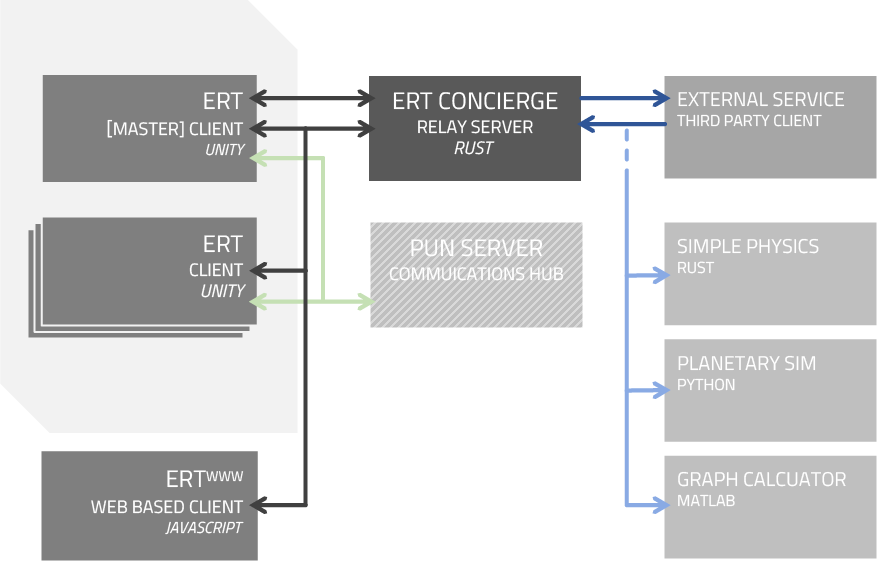
[left] clients
[middle] concierge
[right] external services
The gaming industry has catalyzed the fast-paced advancement of
immersive Virtual Reality (VR) technology. However, there exists
somewhat untapped educational benefits in the realm of VR.
A VR classroom can create a shared virtual space that mimics in-person
teacher guidance and student collaboration without the obstacle of
physical distance. Additionally, the VR classroom creates an opportunity
for a new brand of "lab" exercises only feasible in a virtual, immersive 3D space.
|
_ about |
|
[left]
ERT WEB +
ERT CONCIERGE +
RUST GAME
[right]
ERT WEB +
ERT CONCIERGE +
PLANETARY SIMULATION
|
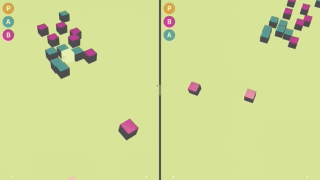 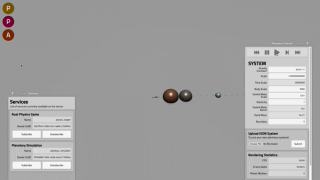 |
#ertweb |
Using low-level networking interfaces, I have also created a server-client protocol
in order to incorporate external application functionality into the VR space and create a lab exercise
for visualizing multivariable mathematical functions. Through the generic plugin
architecture of the server's design, this project allows intuitive integration of new
labs with extensions in Python, MATLAB or other third-party services, facilitating future
collaboration with educators.
|
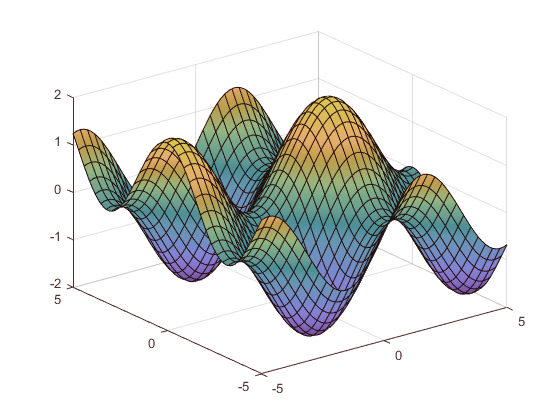 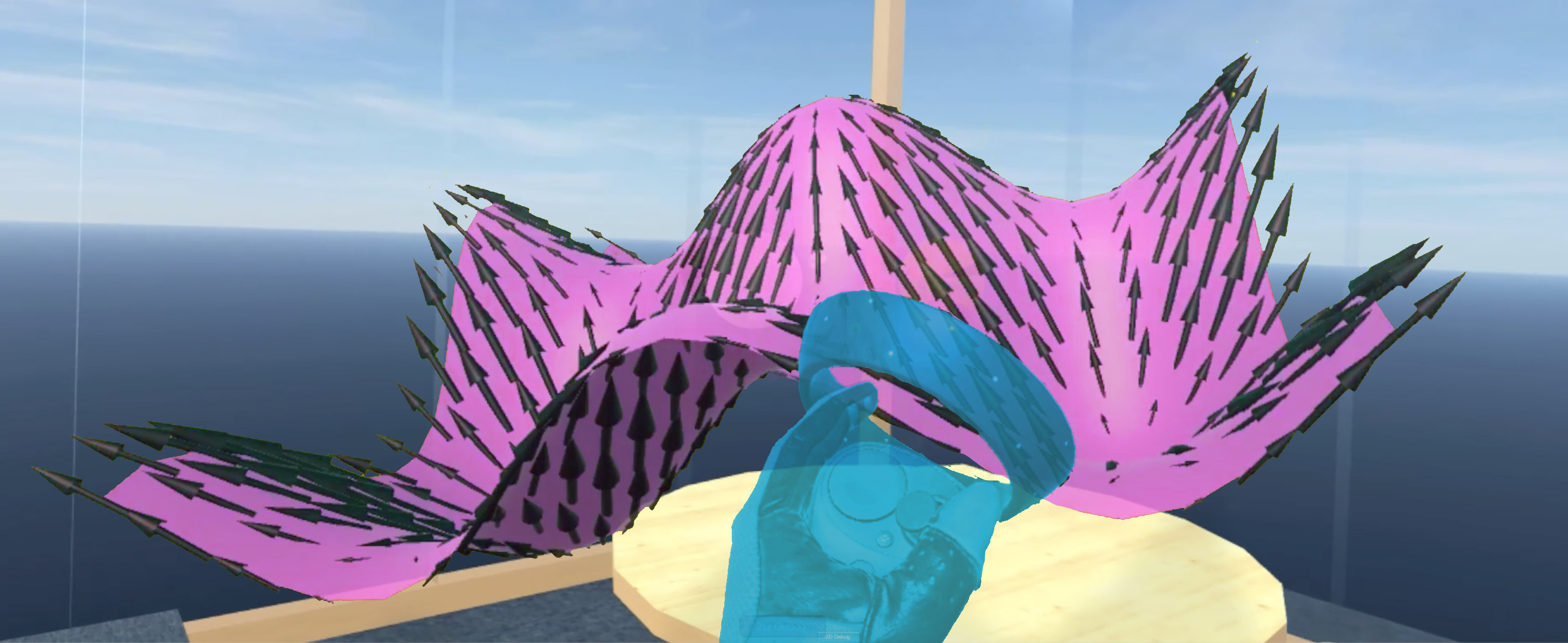
Quad Mesh (surface) generated with vertices and normals from external
Matlab service, and sent back to client alcove.
The ERT (Enhanced Reality Teaching) classroom was originally built on the
Unity game engine, and written in C#, using the packages SteamVR
and Photon Unity Networking (PUN). In 2019, it was updated to work
with the latest version of Unity, SteamVR, and PUN in order to
ensure future functionality. In 2020 the ERT Concierge that allowed it
to communicate with outside services was updated, and a new range of
clients were added to the ecosystem.
In fact, ERT has been extended to allow users to easily integrate their own
'labs' (as applications or simulations) directly into the classroom space.
Two example labs have been tested: a planetary simulation and a MATLAB calculator.
These labs use socket communication in order to sync information with ERT
through a CONCIERGE which handles both continuous updates (in the planetary simulation)
and large packets of information (MATLAB calculator).
|
|
|
|
"The ability to have a flexible collaborative open-source Virtual Reality
application that can also easily communicate with any outside application
and exchange any input or output (text, geometry, or raw data) is a game-changer!"
|
|
From our research we were able to reveal and then focus on the following common educational issues:
- Enabling ways for teachers and researchers to easily share common and
synchronized results from simulations or code with students.
- Enabling simulations or complex computational codes to easily
stream their results into our VR collaborative space in realtime.
Developing for Virtual Reality, as well as most Mixed Reality platforms,
entails creating game like applications, that are highly dependent on
specific harware architectures. Platforms like Steam, have generalized
the interface between an application developement space (such as Unity)
and a general approach to managing a VR/MR/AR headset and the inputs.
However, applications are still highly dependent on creating a monolothic
tool/executable. We can adjust to this reality, by allowing ecosystems
that could benefit from a VR display, by having them act as a service.
With the creating of a middle service manger --a service concierge--
we can easily incorporate applications into an evironment where input
and output is relayed via standard protocols (JSON based).
|
# actionable insights |
 |
|
Interacting with an external application can be done through specific
client designed user interface elements, or by interacting with objects
in the scene that are equipped with sensors/colliders. ERT Concierge
is designed to send small continous updates (such as in the case of
the Python based Planetary Simulation) as we as large comprensive data
(as in the case of results from the Matlab Calculator).
|
|
input from the front end client is wrapped in generic JSON, and concierge
transmits it to the registered service. understanding how to apply the information
is not at the service side through call to provided/supported APIs.
[currently supported] python and matlab
|
#input relay |
|
Communications begin once the server is setup on a specific host and port,
listening for new socket connections. The server then automates the execution
of the MATLAB script.
In ERT, a master Unity client, such as the individual designated the "teacher"
in the classroom, would also be tasked with running and server as well as MATLAB.
The master client would not need to manually run the MATLAB script, instead
they would just need to hit play for ERT in Unity.
Upon the execution of the MATLAB script, the MATLAB client would use TCP/IP
functions to connect to the Unity server, thereafter sending the
handshake-identification message of "MATLAB" to the server.
The JSON data format also facilitates client collaboration functionality with
two JSON fields: Main_ID and Group_IDs. With these fields, the server can manage
which clients should receive relays from MATLAB and create PUN interest groups
that allow the instantiation of the final graph object only for clients
that are part of the group.
|
#matlab|interface |
|
|
[left] student, in alcove, changes value of mass for center sun
[right] synchronized simulation results for all participants
|
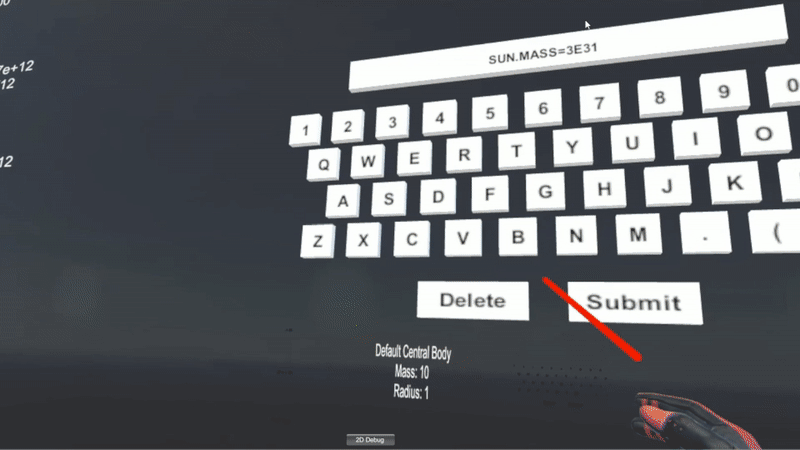 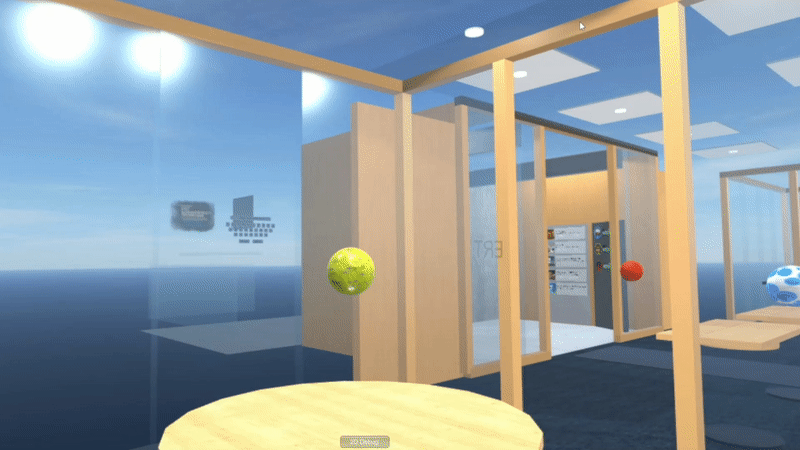 |
#python|interface |
|
_GENERAL CLIENT PROTOCOL
In 2020 we updated ERT Concierge to efficiently tie in clients (of different
types) with a range of services. Both clients and services connect to ERT
CONCIERGE with a common socket and simmilar protocols, but depending on
the registration and context will have different protocols/payloads available.
SEE PAYLOAD PROTOCOL
Furthermore, in order to support larger packet/data transfer, we created a file
system which stores data with disticint indentifiers and is accessible to
registered clients via standard http protocol.
SEE FILESYSTEM USAGE
|
#protocol |
_ project lead : santiago v lombeyda
_ surf 2020 | efficient network services
& new web base client : an tran
_ surf 2019 | network services
& python realtime app synchronization : alison noyes
_ surf 2019 | network services
& matlab large data app communication : sasha fomina
_ center director : george djorgovski
|
_ team |
_ george djorgovski
_ jim barry
_ mathieu desbrun
|
_ collaborators |
PROJECT BORN from CALTECH's OVRAS LAB
_ with support from the CENTER for DATA DRIVEN DISCOVERY
_ with support from Caltech's SUMMER FELLOWSHIP PROGRAM
_ with donations from MICROSOFT
_ with donations from LOGITECH
_ with donations from NVIDIA
_ with donations from HTC
|
_ acknowledgements |
|







